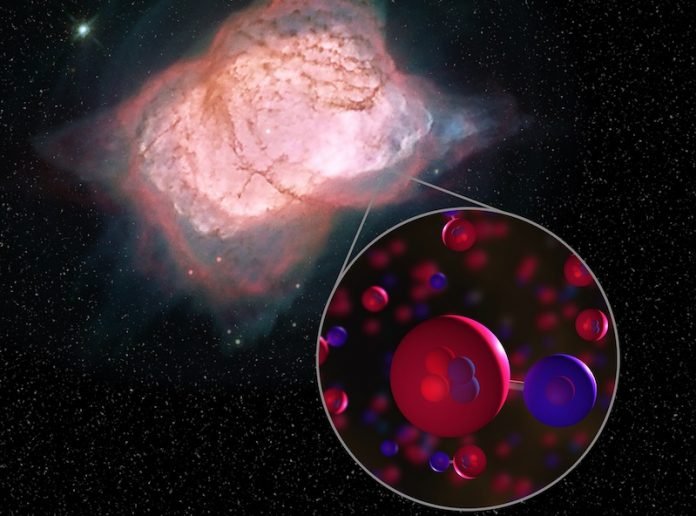
In a new study, researchers have detected the first type of molecule that ever formed in the universe.
This is the first time scientists found the molecule in space after years of searching.
The new discovery provides proof that helium hydride can exist in space.
Researchers used the world’s largest airborne observatory, NASA’s Stratospheric Observatory for Infrared Astronomy, or SOFIA to make the observations.
Previous research has shown that when the universe was still very young, only a few kinds of atoms existed.
Around 100,000 years after the big bang, helium, and hydrogen combined to make a molecule called helium hydride for the first time.
Scientists suggest that helium hydride should be present in some parts of the modern universe, but it has never been detected in space only until now.
In the study, SOFIA found modern helium hydride in a planetary nebula, which is a remnant of what was once a Sun-like star.
The nebula is called NGC 7027 and located 3,000 light-years away near the constellation Cygnus.
The team found that the nebula has conditions that allow this mystery molecule to form.
Helium hydride is a finicky molecule. Helium itself is a noble gas making it very unlikely to combine with any other kind of atom.
In 1925, scientists created the molecule in a laboratory by coaxing the helium to share one of its electrons with a hydrogen ion.
In the late 1970s, scientists who examined the planetary nebula NGC 7027 thought that this environment might form helium hydride.
Subsequent research hinted it could be there, but they could not find the mystery molecule.
This is because the space telescopes used at that time did not have the specific technology to distinguish the signal of helium hydride from other molecules in the nebula.
In this study, SOFIA flies up to 45,000 feet and makes observations above the interfering layers of Earth’s atmosphere.
Because it returns after every flight, scientists could change instruments and install the latest technology.
They improved the observations and made a lot of progress.
In a recent upgrade to one of SOFIA’s instruments called the German Receiver at Terahertz Frequencies, or GREAT, scientists added the specific channel for helium hydride.
This instrument works like a radio receiver, and the team tune to the frequency of the molecule they have been searching for.
They finally found clear signals from helium hydride.
The lead author of the study is Rolf Guesten from the Max Planck Institute for Radio Astronomy.
The study is published in Nature.
Copyright © 2019 Knowridge Science Report. All rights reserved.



